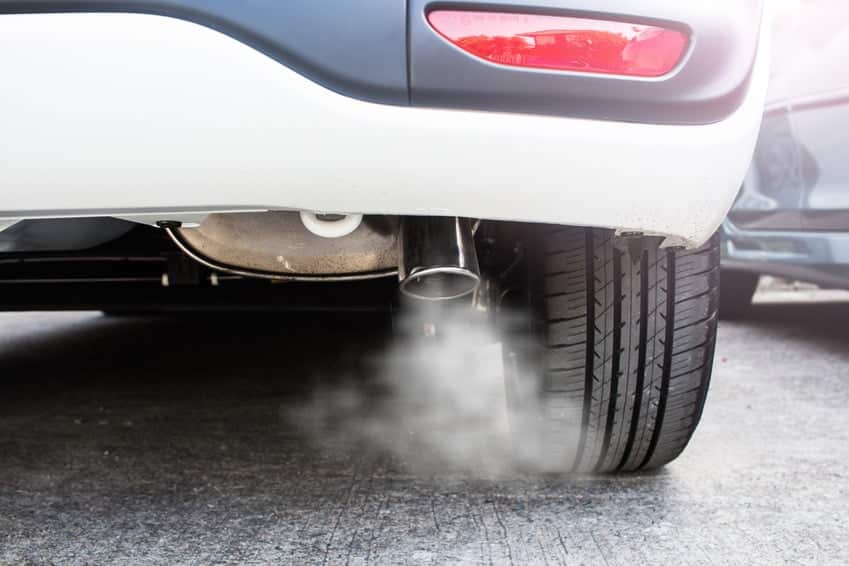If you’re shopping for used car, there are lots of ways to check if it’s in good health. One important area to check is the condition of the engine. While a car may look clean and tidy on the outside, the bonnet could be hiding all manner of sins that might lead to problems and repair bills down the road. Some problems might not be easy to spot during a quick test drive but if you know what signs to check for you could save yourself a lot of pain and expense further down the line.
To help you avoid buying a used car that’s a breakdown waiting to happen, here we look at five engine health checks you need to perform when searching for your next used car.
1. Start with the Service History
A car’s service history should log all maintenance work carried out on the engine, detailing areas of concern and recent fixes that you might need to be aware of. If a car’s logbook is missing or incomplete, you should be asking why. It might be that the current owner has simply been careless when keeping a record of the car’s maintenance schedule, or it could be a sign that they’re deliberately hiding a car’s past in case it puts off potential buyers.
If you’re happy that the service history is fully complete, you should still check it closely, and compare it to the service schedule recommended by the manufacturer. Pay particular attention to when the oil was changed and how frequently, as this will directly affect the health and condition of the engine.

2. Recognise the Signs of Poor Maintenance
Looking under the bonnet is a quick way to spot signs that the engine hasn’t been properly looked after. We’d recommend inspecting the engine both when the ignition is on and off, so you can spot the warning signs of poor maintenance. You need to be looking for the any of these:
- A build-up of gunk and debris on the battery terminals – This could indicate that the battery has a leak, isn’t discharging effectively or is ready to be replaced.
- A burning smell when the ignition is on – While engines do have a distinct odour, they shouldn’t smell of burning. If it does it could mean there’s a problem with components such as the engine oil, transmission or cooling system.
- Leaks – Leaks are impossible to spot when a car is switched off, so you might not notice them until you’ve already handed over the cash and got a few miles down the road. During a test drive, ask to drive the car for at least 20 minutes, as this will give the fluids chance to leak if there’s a hole or crack in any of the engine hoses. Also, look for visible signs of leaks where the car was previously parked. You should also ask to have a look under the car with a torch, to make sure none of the components are covered in fluid that’s escaped from the engine.
- Low oil level – If a car’s oil level is below the minimum fill line, it could be a sign there’s an oil leak or that the engine has been exposed to unnecessary wear, which could cause problems down the road or else shorten the engine’s life. You should also assess how dirty the engine oil looks, which will give you a good idea of when it was last changed.

3. Cold Start the Car
One of the simplest ways to catch hidden engine faults is to perform a cold start. This will reveal any underlying problems and can tell you a lot about the general health of the engine. If the car doesn’t start easily, there could be a problem with the battery or the starter motor. Or, if there’s a strange rattling noise or it sounds like it’s struggling, this could mean there’s a problem with the timing belt or drivetrain. You should also check the exhaust to see how smoky the fumes are. To get a true cold start, mention it to the seller or dealer when you’re arranging to view the car, to make sure they don’t warm things up before you arrive.
4. Check the Colour of the Exhaust Fumes

You can tell a lot about the condition of an engine on the colour and smell of the exhaust fumes coming from the tailpipe. Before you set off on the test drive, switch on the ignition and go around to the back of the car. The smoke, if there is any, should be grey-white, and it should give off a typical petrol or diesel smell. If it’s blue, black or has a strong smell, this could indicate that the engine is burning oil and is in a generally poor bill of health. Avoid any used car that is producing blue, dark grey or black exhaust smoke, as this almost definitely means there’s an underlying issue that could result in a costly repair bill.
5. Assess the Car’s Idle Noise and Feel
Letting the car idle while you look around it will give you a good idea of the general health of the engine. The noise alone can tell you a lot, specifically about components such as the timing belt and battery. It should be smooth, level and stable, with no hesitation or lulls in power, which could indicate a low battery or a problem with the ignition timing. Listen out for unusual vibration or knocking, as this could mean there’s a problem with the engine oil. Keep an eye on the temperature gauge inside the car too, for signs of overheating.
6. If in Doubt, Take an Expert Along

Buying a used car is a big commitment, so it’s important to get it right. If you aren’t confident beneath the bonnet, take along a friend or relative who knows their way around an engine. This will give you the peace of mind that you’re not buying a heap of junk that’s going to cause nothing but trouble, potentially saving you hundreds in unwanted repair bills.
We hope these practical tips prove useful in helping you find your next used car. Once you’ve found a good engine, help improve performance and get a better drive with Redex’s range of products. Click here for the full range.